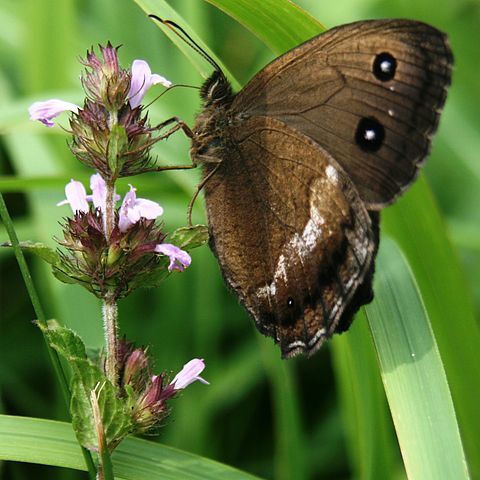Stems to 1 m, base trailing, finely striate, densely pubescent, glandular puberulent. Petiole 3-8 mm; leaf blade ovate, bractlike apex, 2-4 × 1.3-2.6 cm, papery, adaxially densely appressed minutely hispid, abaxially pilose, base rounded to broadly cuneate, margin crenate-serrate, apex acute to obtuse. Verticillasters many flowered, semiglobose, to 3 cm in diam., upper ones ca. 1.5 cm, widely spaced; bracts numerous, needlelike, 3-6 mm. Calyx narrowly tubular, tinged purple-red, ca. 6 mm, pilose, glandular puberulent, pilose inside on teeth, base slightly swollen on 1 side in fruit; upper teeth ± reflexed, narrowly triangular, apex acuminate; lower teeth straight, awned. Corolla purple-red, ca. 9 mm, puberulent; throat with 2 rows of hairs, ca. 2 mm wide; upper lip emarginate. Nutlets yellow-brown, obovoid, ca. 1.2 × 0.9 mm. Fl. May-Aug, fr. Aug-Oct.
More
A herb. It grows to about 30 cm to 1 m high. The base is trailing. There are fine lines along it. It is densely hairy. These straight white hairs give it a silvery appearance. The leaf stalk is 3-8 mm long. The leaf blade is oval and 2-4 cm long by 1.3-2.6 cm wide. They are papery. The base is rounded or wedge shaped. The edges have teeth. There are many flowers in a half round head about 3 cm across. They are purple-red.

